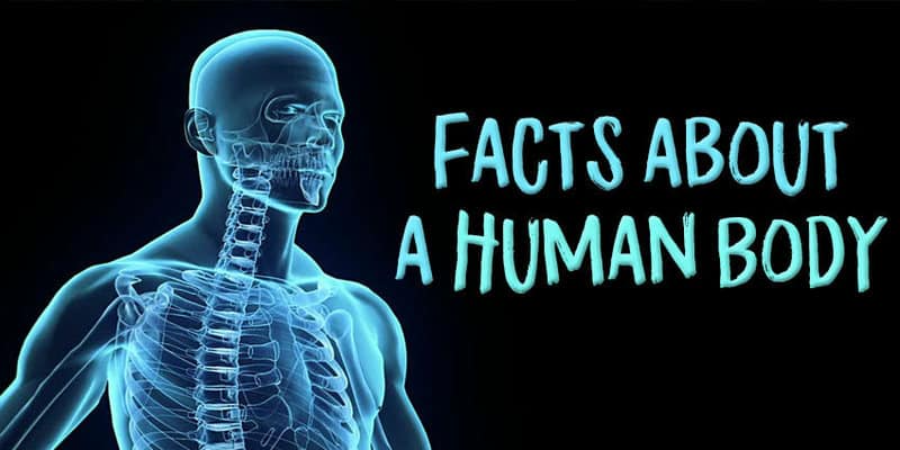

1. Approximately 20 times per minute, or ten million times annually, you typically blink your eyes.
2. When a person reaches puberty, their height stops growing, but their ears and nose continue to expand; this phenomena is caused by gravity.
3. The clear front surface of our eyes, the cornea, draws its oxygen straight from the atmosphere rather than from a blood supply!
4. Were you aware? One strange fact about the human body is that it contains seven bars of soap's worth of fat.
5. The human brain has a three to six minute survival period once the oxygen supply is cut off.
6. Humans begin to develop fingertips as early as the embryo, only.
7.An adult's blood arteries could make four complete laps around the equator of Earth if laid end to end!
8. The Latin word "muscle" means "little mouse," and the Ancient Romans believed that flexed bicep muscles looked like that.
9.The minuscule amount of light emitted by bodies is insufficient for visual perception.
10. The average person's belly button has 67 distinct types of bacteria.
11. Approximately 4 kg of skin cells are lost annually!
12. Until they are at least one month old, babies do not cry.
13.The idea that the human heart is situated on one side of the chest is untrue; instead, the heart is in the center of the chest, not on the left or right.
14.The human brain grows at its fastest rate up to the age of five, and an adult human brain weighs 1.5 kg (3 pounds).
15.The human brain is divided into two sides: the left side governs the right side of the body and the right side regulates the left.
16. Teratomas are tumors that have the ability to generate their own hair and teeth.
17. When you listen to music, your heart might beat in time with the beat.
18. Humans have 206 bones instead of 300 during their lifetime.
19. The human heart is capable of beating outside the body.
20. The diving reflex, which can stop body functioning, is innate in all individuals. When someone drowns or is submerged in water, this is triggered.
21. Although they are too faint for the human eye to see, humans can glow in the dark.
22. The organs in the human body are found both in pairs and in a singular count. On the other hand, you only need one of the pairs of organs to survive.
23.Blood is not always red. Red blood cells are the only ones. The blood of other species comes in different colors.
24.An adult human body has about 1.325 gallons of blood on average.
25.About 55% of the blood that circulates in human bodies is made up of plasma, 40% red blood cells, 4% platelets, and 1% white blood cells.
26.Macrophages, a type of white blood cell, are required for pregnancy to develop.
27.Metals such as iron, chromium, manganese, zinc, lead, copper, and trace amounts of gold can be found in human blood!
28.Hematopoietic stem cells are the source of all human blood cells. The bone marrow produces about 95% of the blood cells in the body.
29.The life cycles of human blood cells differ. Generally speaking, Red.
30.The capillary's cells proliferate and encapsulate the debris in order to remove any obstructions. Blood clots, calcium plaque, and cholesterol are a few examples of this detritus.
